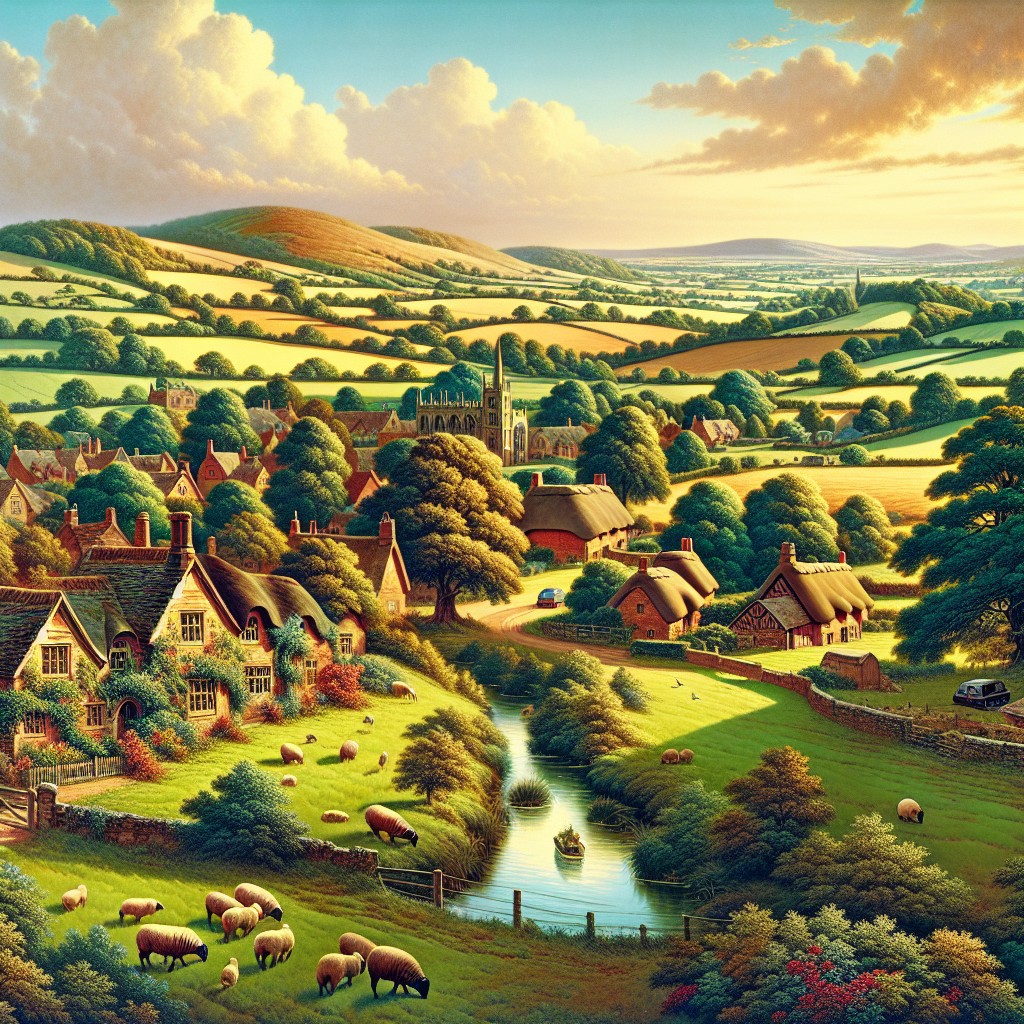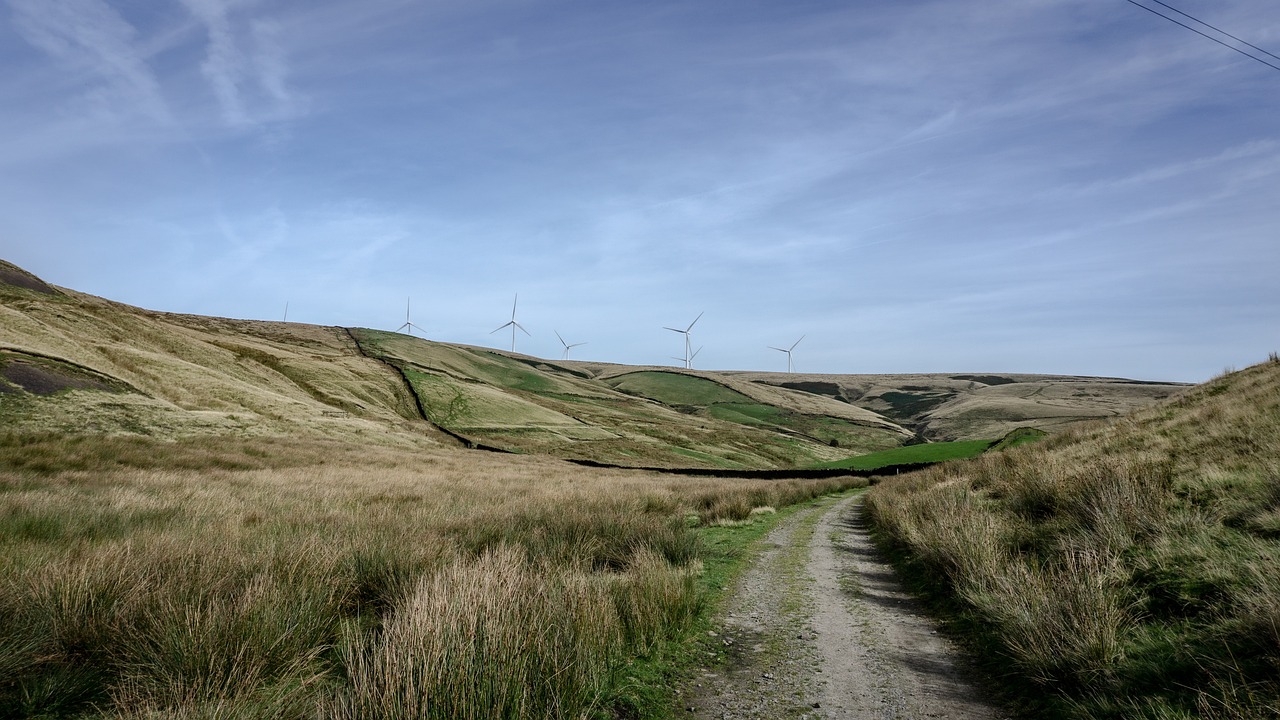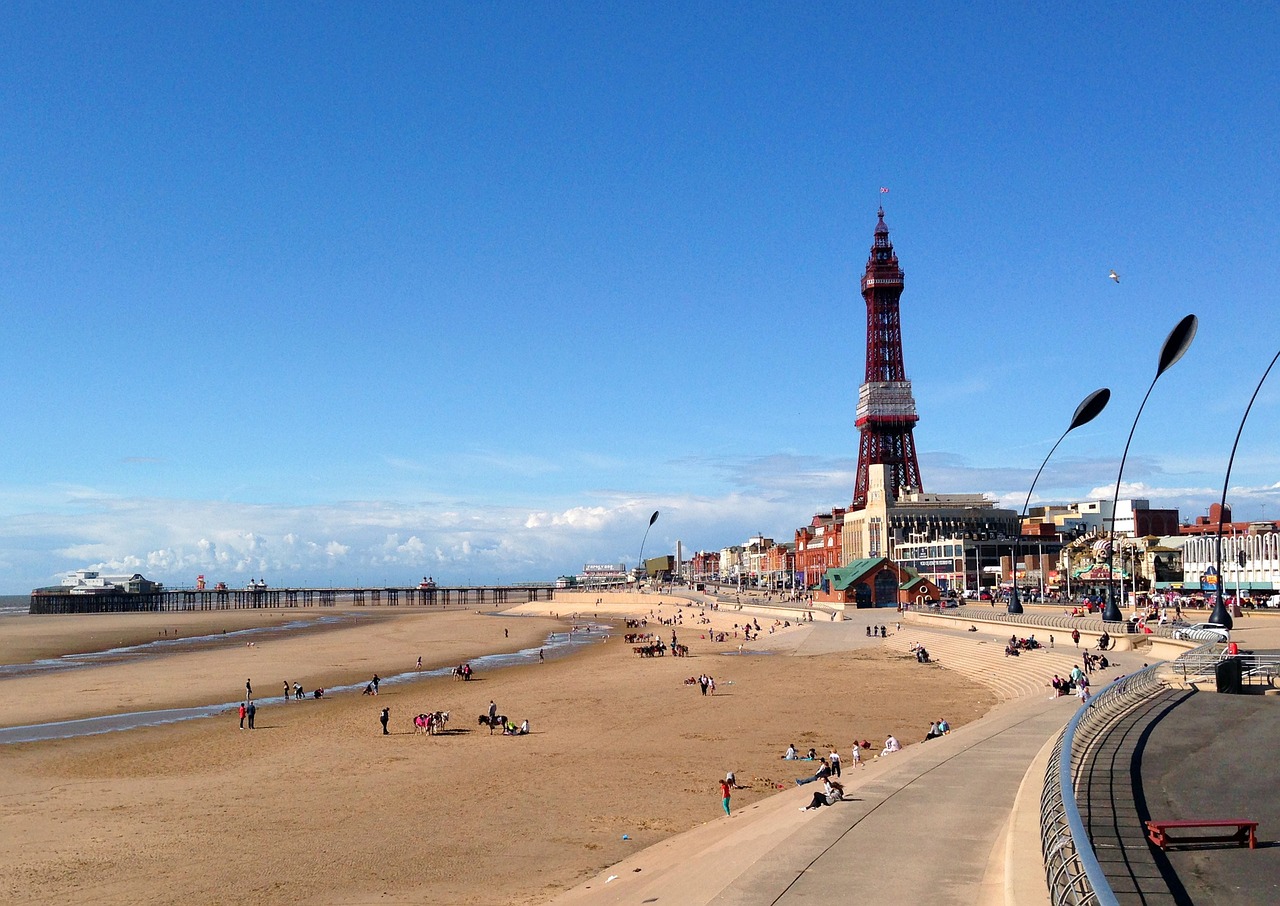
Lancashire is a county located in the North West of England. It is bordered by the counties of Cumbria to the north, Greater Manchester to the east, Merseyside to the south, and North Yorkshire to the east. Lancashire has a rich history that dates back to Roman times, and it played a significant role in England‘s industrial revolution.
The county of Lancashire has a long and fascinating history. It was originally part of the Kingdom of Northumbria, but it later became part of the Kingdom of Mercia. In the 12th century, Lancashire became a county in its own right, and it was granted a royal charter by King Henry
Lancashire played an important role in the Wars of the Roses, with battles taking place in the county.
Lancashire’s industrial revolution began in the late 18th century with the growth of the cotton industry. The county became known as the “workshop of the world” due to its large number of cotton mills. These mills were powered by water from rivers and streams, and they produced vast quantities of cotton goods that were exported around the world. The cotton industry brought great wealth to Lancashire and transformed it into one of the most industrialized regions in England.
Summary
- Lancashire is a historical county in North West England with a rich industrial heritage.
- The county boasts beautiful countryside, including the Trough of Bowland and the Forest of Bowland.
- Lancashire’s coastal towns and cities, such as Blackpool and Morecambe, are popular tourist destinations.
- The county has a vibrant cultural scene, with a focus on literature, music, and art.
- Lancashire is known for its famous food and drink, including Lancashire cheese and black pudding.
Lancashire’s Rich Industrial Heritage: From Cotton Mills to Coal Mining
Lancashire’s industrial past is evident in its landscape and architecture. The county was once home to numerous cotton mills and coal mines, which were at the heart of its industrial revolution.
One of Lancashire’s most famous cotton mills is Quarry Bank Mill, located in Styal. Built in 1784, Quarry Bank Mill was one of the largest and most advanced cotton mills of its time. It played a significant role in the development of the cotton industry and is now a museum that offers visitors a glimpse into the life of a 19th-century mill worker.
In addition to cotton mills, Lancashire was also known for its coal mining industry. The county was rich in coal deposits, and mining played a crucial role in its economy. One of the most famous coal mines in Lancashire was the Astley Green Colliery, which operated from the late 19th century until its closure in 1970. Today, the colliery is a museum that showcases the history of coal mining in Lancashire.
Lancashire’s industrial heritage has shaped the county in many ways. The cotton mills and coal mines may no longer be in operation, but their legacy can still be seen in the architecture and infrastructure of Lancashire’s towns and cities. Many former mill buildings have been converted into apartments, offices, and cultural spaces, preserving their historical significance while adapting to modern needs.
Exploring Lancashire’s Beautiful Countryside: From the Trough of Bowland to the Forest of Bowland
Lancashire is not just known for its industrial heritage; it is also home to beautiful countryside that offers a peaceful escape from city life. The county is blessed with stunning landscapes, including the Trough of Bowland and the Forest of Bowland.
The Trough of Bowland is an area of outstanding natural beauty located in the north-eastern part of Lancashire. It is characterized by its rolling hills, picturesque valleys, and charming villages. The Trough of Bowland is a popular destination for outdoor enthusiasts, offering opportunities for hiking, cycling, and birdwatching. It is also home to a diverse range of wildlife, including red deer, peregrine falcons, and hen harriers.
The Forest of Bowland is another area of outstanding natural beauty in Lancashire. It covers an area of 312 square miles and is known for its heather-covered moorland, ancient woodlands, and tranquil rivers. The Forest of Bowland is a haven for wildlife, with rare species such as the hen harrier and the red squirrel calling it home. Visitors to the Forest of Bowland can enjoy a range of activities, including walking, cycling, fishing, and horse riding.
In addition to the Trough of Bowland and the Forest of Bowland, Lancashire is also home to other beautiful countryside areas, such as the Ribble Valley and the West Pennine Moors. These areas offer stunning landscapes, charming villages, and a wealth of outdoor activities for visitors to enjoy.
Discovering Lancashire’s Coastal Towns and Cities: From Blackpool to Morecambe
Lancashire is also known for its coastal towns and cities, which offer a mix of traditional seaside charm and modern attractions. Two of the most famous coastal destinations in Lancashire are Blackpool and Morecambe.
Blackpool is a vibrant seaside town that has been a popular holiday destination since the 19th century. It is known for its iconic Blackpool Tower, which offers panoramic views of the town and the Irish Sea. Blackpool is also famous for its Pleasure Beach amusement park, which features thrilling rides and attractions for all ages. Other attractions in Blackpool include the Winter Gardens, which hosts a variety of shows and events throughout the year, and the Blackpool Illuminations, a spectacular light show that takes place every autumn.
Morecambe is another popular coastal town in Lancashire. It is located on Morecambe Bay and offers stunning views of the Lake District mountains. Morecambe is known for its long promenade, which is perfect for leisurely walks or bike rides. The town also has a number of attractions, including the Eric Morecambe Statue, which pays tribute to the famous comedian who was born in Morecambe, and the Midland Hotel, a beautiful Art Deco building that has been restored to its former glory.
Lancashire’s coastal towns and cities offer a range of activities for visitors to enjoy. From traditional seaside fun to cultural attractions and natural beauty, there is something for everyone along Lancashire’s coastline.
Lancashire’s Cultural Scene: From Literature to Music and Art
Lancashire has a rich cultural scene that encompasses literature, music, and art. The county has been home to many famous writers, musicians, and artists throughout history.
One of Lancashire’s most famous literary figures is the poet and playwright William Shakespeare. Although Shakespeare was born in Stratford-upon-Avon, he spent a significant portion of his career in Lancashire. He wrote several of his plays while staying at Hoghton Tower, a historic house near Preston. Today, Hoghton Tower is open to the public and offers guided tours that provide insight into Shakespeare’s time in Lancashire.
Lancashire is also known for its musical heritage. The county has produced many famous musicians and bands, including The Beatles, who performed in Lancashire during the early years of their career. The Beatles played at venues such as the Cavern Club in Liverpool and the Oasis Club in Manchester, both of which are located within close proximity to Lancashire.
In addition to literature and music, Lancashire has a thriving art scene. The county is home to numerous art galleries and museums that showcase the work of local and international artists. One of the most famous art galleries in Lancashire is the Harris Museum and Art Gallery in Preston, which houses a collection of fine art, decorative art, and historical artifacts.
Lancashire also hosts a variety of cultural events and festivals throughout the year. These include literary festivals, music festivals, and art exhibitions. These events provide opportunities for visitors to immerse themselves in Lancashire’s vibrant cultural scene.
Lancashire’s Famous Food and Drink: From Lancashire Cheese to Black Pudding
Lancashire is known for its delicious food and drink, which reflects the county’s agricultural heritage. One of the most famous culinary delights from Lancashire is Lancashire cheese. This crumbly, creamy cheese has a distinct flavor and is often enjoyed on its own or as an ingredient in traditional dishes such as Lancashire hotpot.
Another famous Lancashire dish is black pudding. Made from a mixture of pig’s blood, fat, and oatmeal, black pudding is a staple of traditional English breakfasts. It is often served alongside bacon, eggs, and toast.
Lancashire is also known for its pies, particularly the famous Lancashire meat and potato pie. This hearty dish consists of tender chunks of beef and potatoes encased in a flaky pastry crust. It is often served with mushy peas and gravy.
In addition to its food, Lancashire is also famous for its drink. The county has a long history of brewing beer, and there are several breweries in Lancashire that produce a range of traditional ales and craft beers. Visitors to Lancashire can enjoy a pint of locally brewed beer at one of the county’s many pubs and bars.
Lancashire’s Sporting Traditions: From Football to Cricket and Rugby
Lancashire has a strong sporting tradition and is home to several famous sports teams and athletes. Football is particularly popular in the county, with several professional football clubs based in Lancashire.
One of the most famous football clubs in Lancashire is Manchester United. Although the club’s stadium is located in Greater Manchester, it has strong ties to Lancashire. Manchester United was originally founded as Newton Heath LYR Football Club in 1878 and played its first games at North Road in Newton Heath, which was then part of Lancashire.
Cricket is another popular sport in Lancashire, with the county being home to the historic Old Trafford Cricket Ground. The ground has hosted many international cricket matches and is the home ground of Lancashire County Cricket Club. Lancashire has produced many talented cricketers over the years, including Andrew Flintoff and James Anderson.
Rugby is also popular in Lancashire, with several rugby league and rugby union teams based in the county. The Wigan Warriors and St Helens are two of the most successful rugby league teams in England and have strong support in Lancashire.
Visitors to Lancashire can watch sporting events at various stadiums and grounds throughout the county. Whether it’s football, cricket, or rugby, there is always a sporting event to enjoy in Lancashire.
Lancashire’s Festivals and Events: From the Preston Guild to the Blackpool Illuminations
Lancashire is home to a variety of festivals and events that celebrate its rich cultural heritage and provide entertainment for residents and visitors alike.
One of the most famous festivals in Lancashire is the Preston Guild, which takes place every 20 years. The Guild dates back to 1179 and is one of the oldest continuous celebrations in England. The festival features a range of events, including parades, concerts, and exhibitions. It attracts visitors from all over the world who come to experience the unique atmosphere of this historic event.
Another popular event in Lancashire is the Blackpool Illuminations. This annual light show takes place along Blackpool’s promenade and features a dazzling display of lights, lasers, and projections. The Blackpool Illuminations attract millions of visitors each year and are a highlight of the county’s cultural calendar.
Lancashire also hosts a variety of music festivals, including the Lytham Festival and the Beat-Herder Festival. The Lytham Festival is a week-long celebration of music that takes place in Lytham St Annes. It features performances by renowned artists from various genres, including pop, rock, classical, and jazz. The Beat-Herder Festival is a unique and eclectic music festival that takes place in the Ribble Valley. It showcases a diverse range of music, from electronic and dance to indie and folk.
These are just a few examples of the many festivals and events that take place in Lancashire throughout the year. Whether you’re interested in music, art, literature, or history, there is always something happening in Lancashire to suit your tastes.
Lancashire’s Top Tourist Attractions: From Lancaster Castle to the Ribble Steam Railway
Lancashire is home to a wide range of tourist attractions that showcase its rich history, natural beauty, and cultural heritage.
One of Lancashire’s most famous landmarks is Lancaster Castle. This medieval fortress has a history that dates back over 1,000 years and has been used as a prison, a court, and a royal residence. Visitors to Lancaster Castle can explore its fascinating history through guided tours and exhibitions.
Another popular tourist attraction in Lancashire is the Ribble Steam Railway. This heritage railway offers visitors the chance to step back in time and experience the golden age of steam travel. The railway runs along the banks of the River Ribble and offers stunning views of the Lancashire countryside.
Lancashire is also home to several stately homes and gardens that are open to the public. One of the most impressive is Gawthorpe Hall, a beautiful Elizabethan house located near Burnley. Gawthorpe Hall is known for its stunning architecture and its collection of textiles, which includes rare examples of lace and embroidery.
Other top tourist attractions in Lancashire include the Pendle Hill, which is famous for its association with the Pendle witches; the Ashton Memorial in Williamson Park, which offers panoramic views of Lancaster; and the Martin Mere Wetland Centre, which is home to a variety of bird species.
Planning Your Visit to Lancashire: Accommodation, Transport and Practical Information.
When planning a visit to Lancashire, there are several factors to consider, including accommodation, transport, and practical information.
Lancashire offers a range of accommodation options to suit every budget and preference. From luxury hotels and boutique bed and breakfasts to self-catering cottages and campsites, there is something for everyone in Lancashire. Popular areas to stay include the cities of Manchester and Liverpool, as well as the coastal towns of Blackpool and Morecambe.
Getting to Lancashire is easy, thanks to its excellent transport links. The county is well-served by road and rail networks, making it easily accessible from other parts of the UK. The M6 motorway runs through Lancashire, providing a direct route from London and the South East. There are also several train stations in Lancashire, including Preston, Blackpool North, and Lancaster, which offer regular services to major cities such as Manchester and Liverpool.
Before visiting Lancashire, it is advisable to check the local weather forecast and pack appropriate clothing. The weather in Lancashire can be changeable, so it is a good idea to bring layers that can be added or removed as needed. It is also worth checking if any festivals or events are taking place during your visit, as these may affect accommodation availability and transport options.
In conclusion, Lancashire is a county with a rich history, stunning countryside, vibrant coastal towns, a thriving cultural scene, delicious food and drink, a strong sporting tradition, and a wide range of tourist attractions. Whether you are interested in exploring historic landmarks, enjoying outdoor activities, indulging in local cuisine, or immersing yourself in the local culture, Lancashire has something to offer for everyone. From the iconic Blackpool Tower and the picturesque Ribble Valley to the bustling city of Preston and the charming villages of the Forest of Bowland, there is no shortage of places to visit and things to do. With its warm and welcoming locals, Lancashire is a destination that will leave you with unforgettable memories and a desire to return again and again.
FAQs
What is Lancashire?
Lancashire is a historic county in the north west of England. It is bordered by Cumbria to the north, Greater Manchester to the south, and Merseyside and West Yorkshire to the south west and east respectively.
What is the population of Lancashire?
As of 2021, the estimated population of Lancashire is around 1.5 million people.
What are some major cities in Lancashire?
Some major cities in Lancashire include Preston, Blackburn, Burnley, and Lancaster.
What is the economy of Lancashire like?
Lancashire has a diverse economy, with industries such as aerospace, advanced manufacturing, and healthcare playing a significant role. The county is also known for its agricultural sector, particularly in dairy farming.
What are some popular tourist attractions in Lancashire?
Lancashire is home to a number of popular tourist attractions, including Blackpool Tower, the Forest of Bowland, and Lancaster Castle. The county is also known for its beautiful countryside and coastline, which attract many visitors each year.
What is the climate like in Lancashire?
Lancashire has a temperate maritime climate, with mild temperatures and rainfall throughout the year. The county can experience occasional snowfall during the winter months.




